
This article provides tips and advice from my 16 years of physical therapy practice for managing the pain, choosing the right shoes, and finding the most comfortable trails to hike. This is not medical advice, please see a licensed professional if you are unable to manage your condition.
Are you a nature lover and an avid hiker, but struggle with the discomfort of plantar fasciitis? Don’t let this condition hold you back from exploring the great outdoors! With proper preparation and equipment, hiking with plantar fasciitis can still be an enjoyable and fulfilling experience.
Read until the end for all the tips and tricks to have a pain-free hiking experience and my recommendations for hiking boots with plantar faciitis.
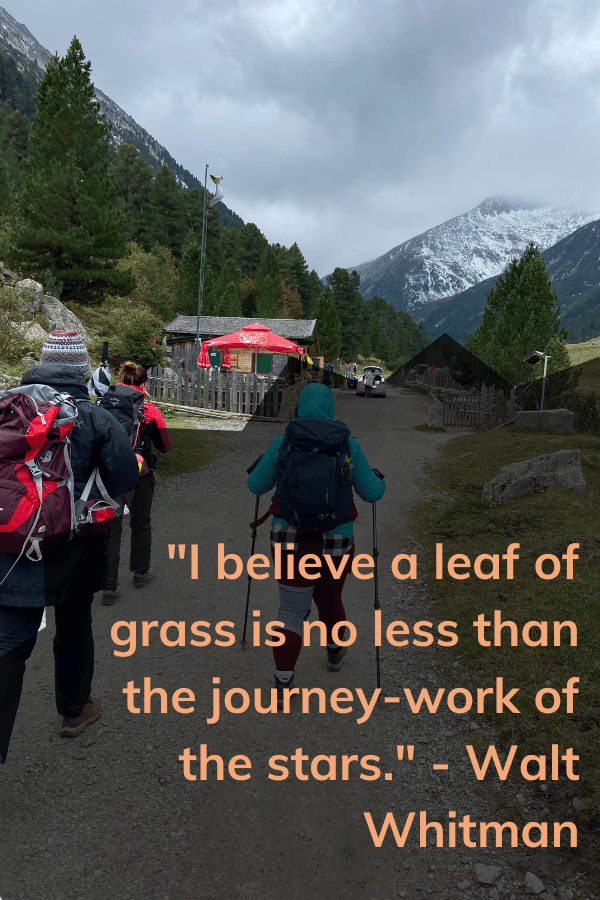
What You Will Learn
- Do You Have Plantar Fasciitis or is it Something Else?
- Most Effective Treatments for Plantar Fasciitis
- Understanding Plantar Fasciitis
- Preventive Measures
- Choosing the Right Shoes with Plantar Fasciitis
- Choosing the Right Socks
- Common Triggers
- Stretching and Exercises for Plantar Fasciitis
- Alternative Hiking Techniques
- Importance of Gradual Increase in Activity
- FAQ Back of Heel Pain Hiking
- More Resources
Do You Have Plantar Fasciitis or is it Something Else?
Plantar fasciitis occurs when the shock absorber for your foot (the arch) has been sensitized. There’s not a universally accepted mechanism and people tend to have flareups repeatedly so it’s typically a management issue.
If you experience stabbing pain around your heel or mid-foot, and especially if you feel pain when you first step down from your bed in the morning, these are typical signs that your heel pain may be plantar fasciitis.
You may also be susceptible to the condition if you have recently made a switch to minimal or barefoot running, are overweight, or have increased your mileage, stride, or pace too rapidly to adapt.
| Is it Plantar Fasciitis? | Yes |
|---|---|
| Is the first step out of bed the worst pain? | ✅ Plantar Fasciitis |
| Does it hurt when you poke the bottom of your heel? | ✅ Plantar Fasciitis |
| Does the pain feel better during exercise, then return when resting? | ✅ Plantar Fasciitis |
| Is there tingling or numbness on your heel? | 🛑 Not Plantar Fasciitis |
| Do you have Diabetes and foot pain? | 🛑 Not Plantar Fasciitis |
| Is the pain unrelenting? | 🛑 Not Plantar Fasciitis |
Those suffering from this condition often experience chronic heel and arch pain, which can be extremely unpleasant. In some cases, it may even make you feel like giving up on hiking and trying out a more sedentary pastime.
However, this does not have to be the case. By taking the necessary precautions and selecting the right type of footwear, it is still possible to enjoy hiking safely, even with plantar fasciitis.
The plantar fascia, which connects the shock absorber to the foot bones, can microtear when the system is strained, leading to pain and inflammation. Walking on the heels to avoid the pain can lead to shin splints, so it’s important to address the root issue.
In my experience, the most effective treatments for plantar fasciitis are also the simplest and cheapest.
These include stretching and strengthening the shock absorber system, finding proper footwear, losing weight along with some rest.
For example, rolling a frozen golf ball under your foot first thing in the morning can help desenzitize the area.
Taking time to warmup your lower body and massage your foot can also aid in the healing process.
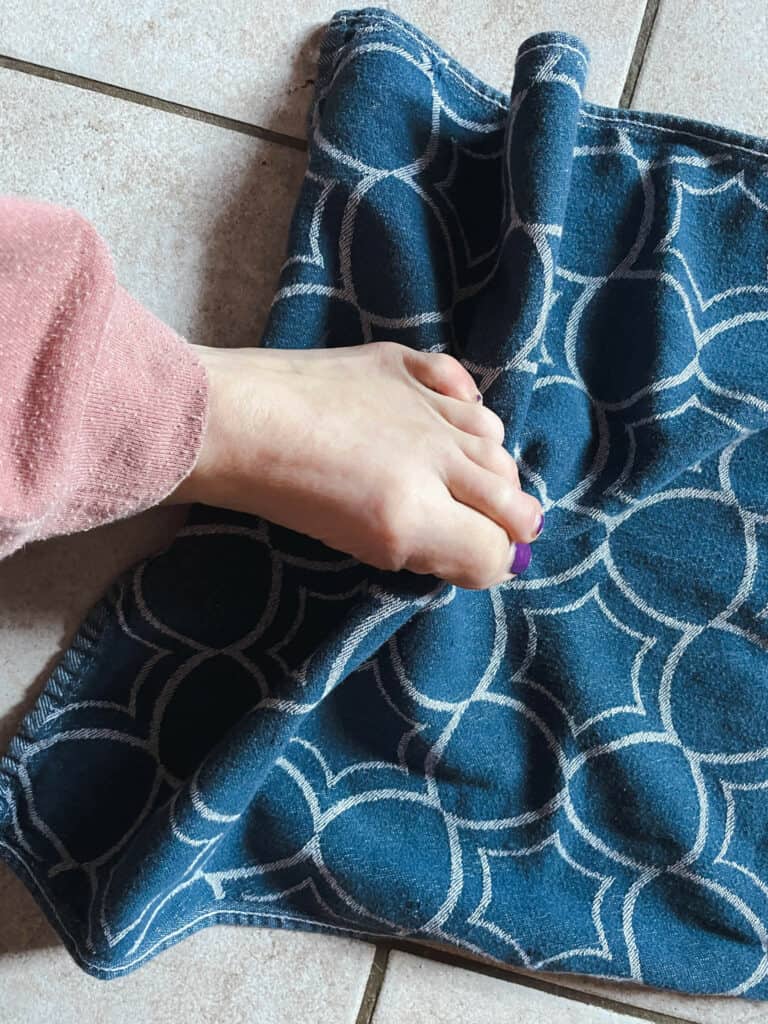
Most Effective Treatments for Plantar Fasciitis
Contrary to what some doctors may recommend, more arch support is not always the solution for plantar fasciitis. In fact, wearing heavily padded shoes can actually weaken the shock absorber muscles and contribute to the development of the condition. Instead, focus on non-invasive treatments and lifestyle modification.
- Lose weight if needed, perform low impact exercise like biking or swimming daily
- Change your footwear
- Strengthen your lower body and foot muscles
- Utilize trekking poles to off-load affected foot – How to use trekking poles correctly
- Gradually increase walking distances
- Sleep in a boot that holds your foot in “dorsiflexion”
- Hot and cold therapy
- Experiment with insoles or inserts for improved comfort (if it hurts a lot more discontinue use)
- Mobilize and Massage the affected area
- NSAIDs
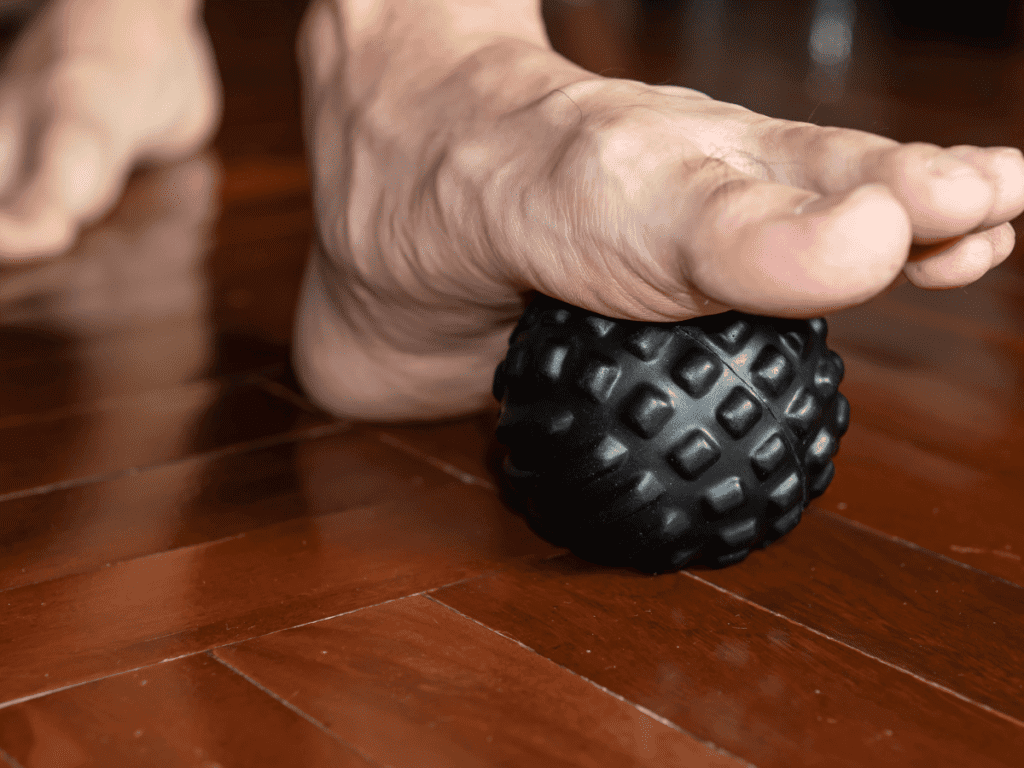
To ensure you stay comfortable during your outdoor activities, it is important to select the right kind of shoes, as well as to take breaks and stretch during your hike. Furthermore, wearing orthotic insoles can help to provide additional arch support and cushioning. Following these steps will help to reduce the pain and discomfort caused by plantar fasciitis and allow you to enjoy the great outdoors without worrying about your feet.
Understanding Plantar Fasciitis
In order to properly treat your condition, it is important to first understand exactly what it is. Plantar fasciitis is an inflammation of the tissue that runs along the bottom of your foot, from the heel to the toes, known as the plantar fascia. This ligament provides connecting points for the muscles and bones of your foot, and helps to give your foot stability and support as you move and stand.
Deep Dive of the Problem with Plantar Fasciitis
When it becomes overstretched or damaged due to a sudden change in activity level or due to overuse, the area becomes inflamed and can cause intense pain in your heel, arch or ball of your foot. While the pain can be debilitating, with the right combination of rest, stretching and other treatments, the inflammation can be reduced and the pain can be relieved. It is important to take your time in the healing process as rushing it can lead to further injury or reinjury. With patience and dedication to your treatment plan, you can manage the pain and inflammation associated with plantar fasciitis and return to your favorite activities.
Preventive Measures
Even when you have plantar fasciitis, you don’t have to miss out on all the joys of hiking. With any physical activity, it’s important to take preventive measures to keep your feet and overall health in tip-top shape. That’s why it’s essential to mobilize your feet before hitting the trails.
Taking the time to do a few minutes of stretching can help to improve blood flow, reduce tension and tightness in the muscles, and delay exhaustion which could lead to overuse and further inflammation.
Furthermore, be mindful of how you’re using your feet. Rather than landing too heavily on your heels, try to push off with your toes which can help to distribute the weight of your body more evenly.
Additionally, keep the pace slow to conserve energy and put less strain on your feet and ligaments.
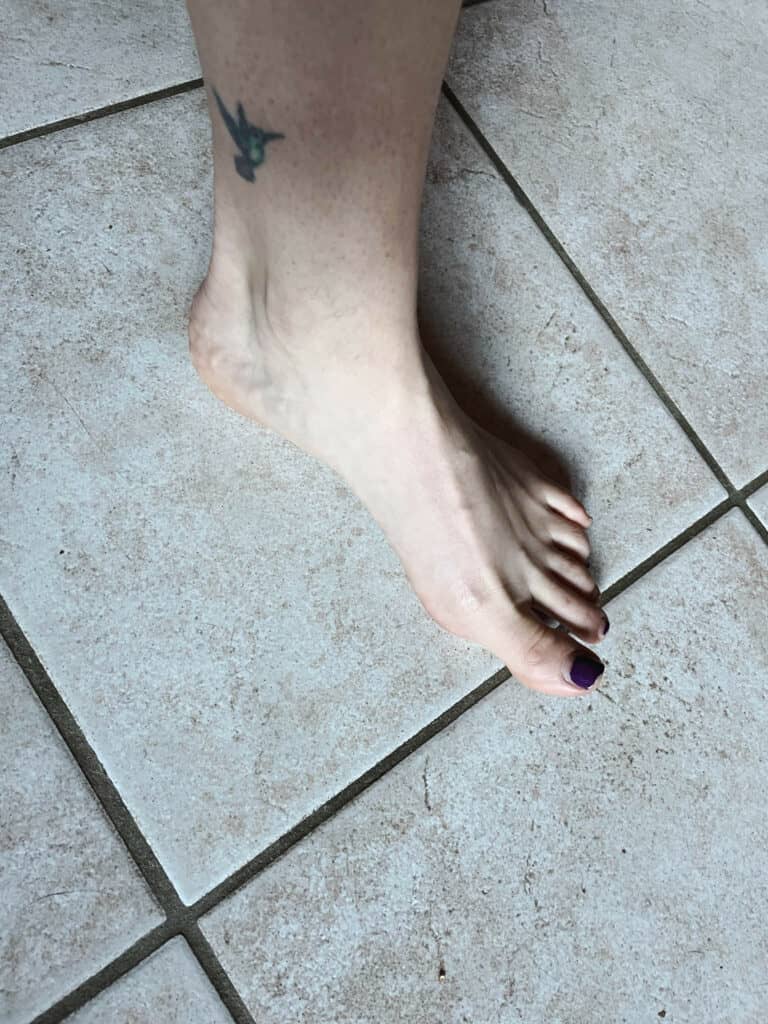
It’s also important to take regular breaks during your hikes. Sitting down or switching to an alternate form of exercise, like walking down a flat, level surface, can give your ligaments a much-needed break. As much as you may be tempted to keep going, it’s essential to listen to your body and ease up when pain or fatigue sets in.
Finally, keep your feet and the rest of your body cool and dry. Heat and sweat can increase the inflammation and make your pain worse. Wear thin, breathable socks instead of cotton, as it tends to retain moisture and heat.
Make sure to keep your feet dry and cool while you’re out on the trails. With these simple preventive measures, you can enjoy a hike even with plantar fasciitis.
Choosing the Right Shoes with Plantar Fasciitis
One of the most important things that you can do to manage your plantar fasciitis symptoms is to choose the right shoes for your hikes and replace them regularly, about every 6-12 months depending on usage.
The type of shoe will vary greatly depending upon the person so you must try on the shoes in the store and walk around in them.
You should try them on in person and walk around in them. Good shoe stores will have a treadmill for your trial.
Some people respond better to thick cushioned shoes like Hoka trail running shoes and others feel better in a lightweight, low profile shoe or even a sandal.
The most important thing is to change styles too rapidly. Additionally, the shoes you wear around the house and work will make a difference as well. Take care of your feet and avoid suffering for fashion.
Choosing the Right Socks
This likely has a minimal impact, but every little bit helps. It’s important to experiment for your own feet to determine what works best and sometimes it’s a moving target.
Some people will find doubling up on socks by using a hiking sock liner may help. And others find toe socks for hiking offers some relief.
Either way, choose socks that are anti-blister for hiking that are breathable, comfortable and wicking moisture away from skin.
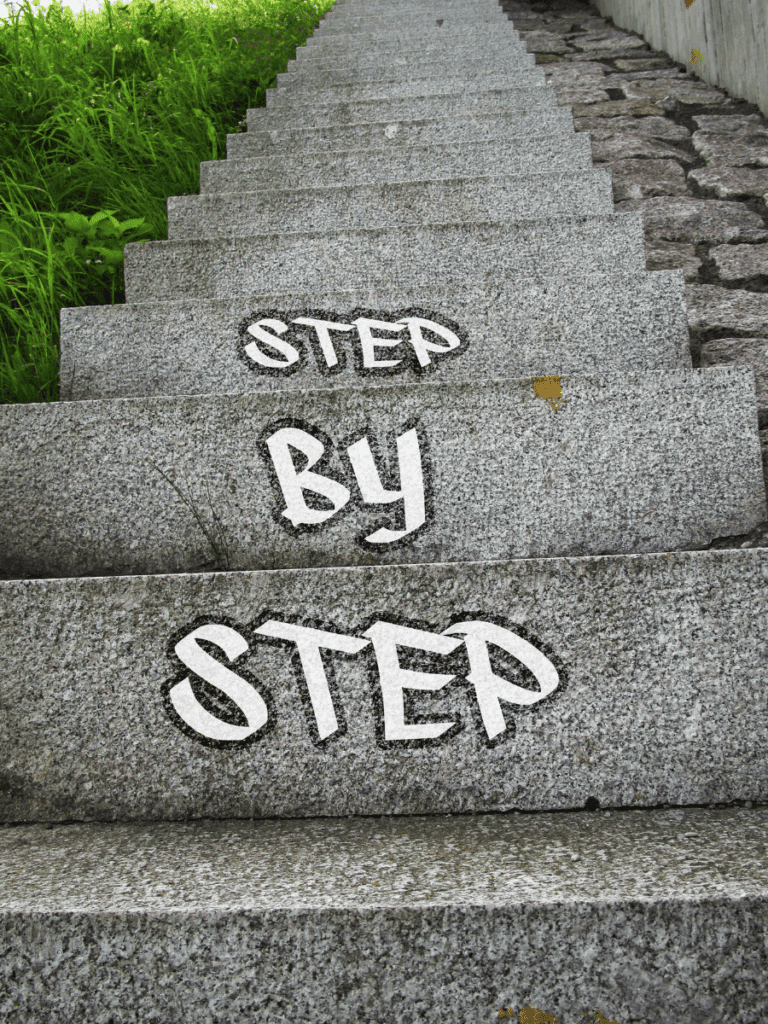
Common Triggers
A common trigger for plantar fasciitis is moving to a new home that only has tiled floors and your family does not wear shoes indoors.
The person previously walked on carpeted floors and then abruptly switched to tile and that simple change starts the cascade of plantar fasciitis.
When you’re ready to take on the trails, make sure you have tested your shoes and gradually adapt to longer distances and more strenuous trails.
Stretching and Exercises for Plantar Fasciitis
Stretching and exercising can be an important part of treating and preventing pain from plantar fasciitis. Regular stretching can help to improve flexibility, reduce tension in the affected area, and promote blood flow, which can in turn reduce inflammation and pain. Some stretches that are especially helpful for plantar fasciitis include:
- Calf stretches and self massage with a foam roller: Stand facing a wall, place your hands on the wall, and step forward with your affected foot. Keep your back leg straight and your front knee bent. Hold for 20-30 seconds, then repeat with the other leg. Use a foam roller to massage the entire shin area.
- Arch stretches: Place a rolled-up towel under the affected foot and use your toes to pull it towards you. Hold for 20-30 seconds, then repeat with the other foot.
- Toe raises: Stand with your feet hip-width apart and raise up onto the balls of your feet. Hold for 5 seconds, then lower your heels. Repeat 10-15 times.
- Toe Curls: Sit in a chair barefoot. Place a dishtowel on the ground. Starting on the close end, use your toes to grab the towel and pick it up inch by inch.
- Marbles: Place 20 marbles on the floor next to a cup. Use your toes to grab the marbles one by one and place them in the cup.
Incorporating these exercises and stretches into your daily routine can help to reduce pain and improve the overall health of your feet.
Alternative Hiking Techniques
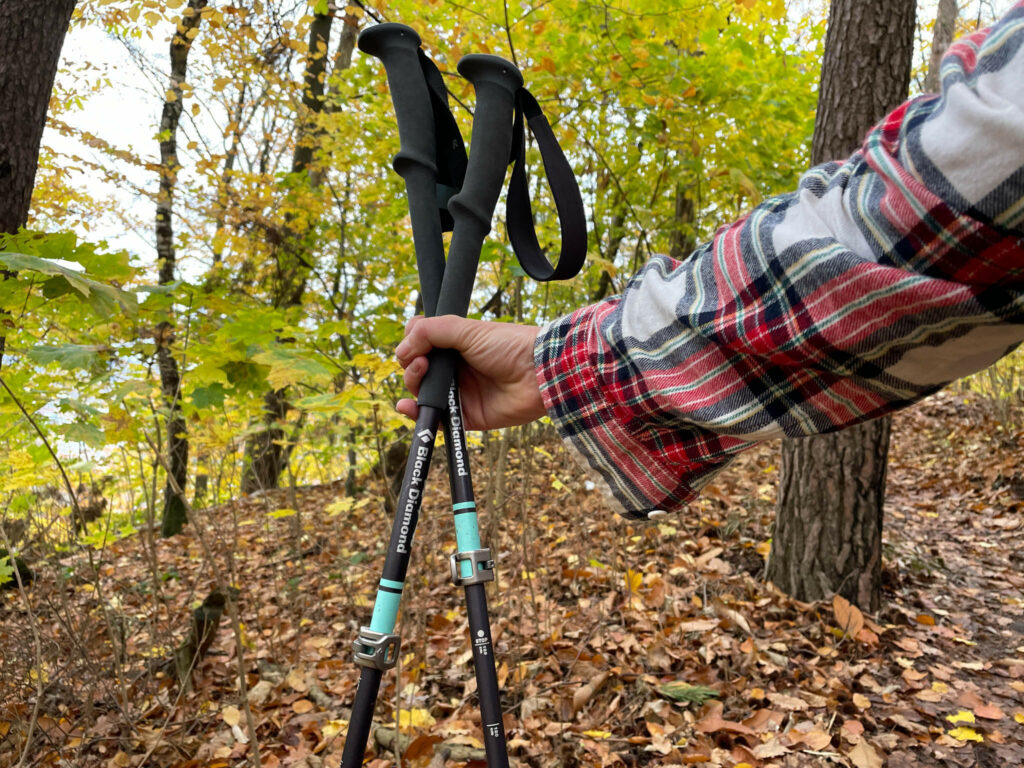
While plantar fasciitis can make hiking uncomfortable, there are alternative techniques that can help to reduce the stress on your feet and reduce pain. Some tips for hiking with plantar fasciitis include:
- Hiking on flat terrain is a great way to get a good workout without having to worry about the dangers of steep inclines and declines. Flat terrain is ideal for those who want to take in the great outdoors, but don’t want to put their body through the strain of constantly walking up and down hills. You’ll be able to travel for longer distances, take in the scenery, and still get an enjoyable and rewarding workout. Whether you’re a novice hiker or a seasoned veteran, hiking on flat terrain is an ideal way to get a great workout without having to worry about the risks of more difficult terrain.
- Using trekking poles can be a great way to improve your hiking experience! Not only do they help to distribute your weight more evenly, reducing strain on your feet and legs, but they can also provide stability on uneven terrain, helping you to maintain your balance and keep you safe as you traverse the trail. Additionally, trekking poles can give you a much needed break from the ground, allowing you to rest your arms and shoulders if you become fatigued during your journey. Trekking poles can be an invaluable aid when out on the trail, and can make the difference between an enjoyable, successful journey and a difficult, exhausting experience.
- Going for a walk on the softer ground can be a great way to get some exercise and enjoy the scenery around you. Instead of the usual hard concrete or asphalt, why not try going for a hike along a dirt or gravel trail? These types of trails are much more forgiving on your feet and joints and can provide a more enjoyable experience. Plus, you’ll be able to take in the sights and sounds of the natural environment, which can be a very calming and peaceful experience. So the next time you’re out for a walk or run, why not go for a hike on a soft surface? You’ll be glad you did!
By taking these alternative hiking techniques into consideration, you can enjoy the benefits of hiking without exacerbating your plantar fasciitis symptoms.
Importance of Gradual Increase in Activity
When dealing with plantar fasciitis, it is hugely important to increase your activity level in a gradual manner in order to avoid any further injury or pain. Start off with shorter hikes and then gradually increase the distance and intensity of your hikes as your body becomes more accustomed to the activity.
In addition, it is also very important to be aware of your body and to take breaks when necessary. If you start to experience discomfort or pain, it is best to stop the activity at once and rest until the pain subsides. Furthermore, during any activity, it is important to wear supportive shoes that fit properly and provide your feet with adequate cushioning and support. Additionally, to reduce the impact on your feet, try to vary your activities and choose low-impact alternatives where possible. Finally, try to stay well hydrated and take some time to stretch your feet and calves before and after any physical activity.
By gradually increasing your activity level, you can avoid exacerbating your plantar fasciitis symptoms and continue to enjoy the benefits of hiking without pain.
MORE HIKING RESOURCES
Get more physical therapist expert hiking tips here 👎🏻
- How to Use a Weighted Vest for Hiking Training
- Enjoy Hiking as a Hobby
- Best Blister Kits for Hiking
- 🥾 Best Hut to Hut Hikes in Europe
- 🏰 Directory of Hiking Resources to Make Your Next Hike Comfortable
FAQ Back of Heel Pain Hiking
Can I still hike with plantar fasciitis?
This depends. If it is a new case and in the “acute phase” you should try alternative exercise that is low weight bearing such as swimming or biking. If you’ve had plantar fasciitis for more than 2 months and are in a more chronic state, it is worth your time to begin gently introducing hiking little by little.
What activities aggravate plantar fasciitis?
High impact load bearing exercises or activities like walking barefoot on hard surfaces, jumping, running and sprinting. First step out of bed will also aggravate the situation so take your time getting out of bed.
Conclusion
With the correct preventative measures and the proper equipment, plantar fasciitis doesn’t have to keep you from experiencing the beauty of the great outdoors. With the right precautions, you can still benefit from the wonderful activities that nature has to offer.
This includes wearing supportive shoes and orthotics, stretching your feet and calf muscles regularly, using arch support, and using ice and heat therapy. Additionally, it’s important to take it easy and not overexert yourself. With these steps, you can still enjoy the wonders of nature without fear of further damage to your feet.
This is not medical advice.
⌚ Explore more with confidence with our top-rated hiking and navigational watch!
If you need a reliable GPS watch for your trip, then my personal recommendation is to choose Garmin Fenix 7X Sapphire Watch, an award winning navigation watch with advanced features like GPS tracking, altimeter and long battery life. Plus with durable and waterproof design, you can take on any weather.
Buy a watch HEREWe hope this guide filled with interesting information about hiking with plantar fasciitis has given you the proper information to plan your next adventure.
More Resources
Discover gear that elevates your outdoor adventures. As a physical therapist, I’ve curated product comparisons to enhance safety and enjoyment, perfect for beginners or those with weary knees.
Physical Therapist Curated Gear Guides for Hikers & Skiers
- 🧎 Make your knees feel better while hiking and walking: Best Knee Braces for Hiking
- 🌳Make the downhills stop hurting and hike with more confidence Best Trekking Poles Review
- ⌚ Never get lost on the trail and navigate the wilderness safely with My Review of the Best GPS Watches for Hiking
- ❄️ Go hiking on uneven terrain safely: The Best Hiking Boots with Ankle Support
- Don’t get lost in the backcountry with : My Review of the Best 2 Way Radios for the Mountains
My Guides to Bucketlist Hikes in Europe
(That I’ve personally done and loved.)
Like it? Share it to promote sustainable tourism.

Author profile: Morgan Fielder is a Doctor of Physical Therapy and passionate hiker who believes in exploring the world on foot with good food. Follow her journey as she shares science-based hiking tips and advocates for sustainable tourism.
